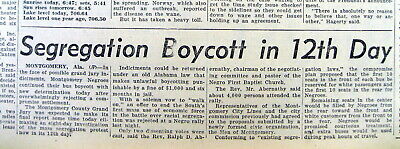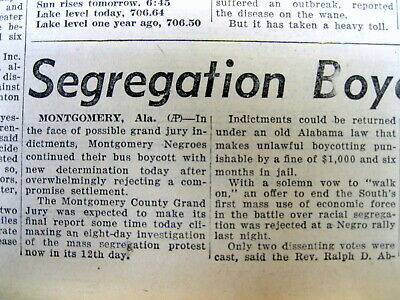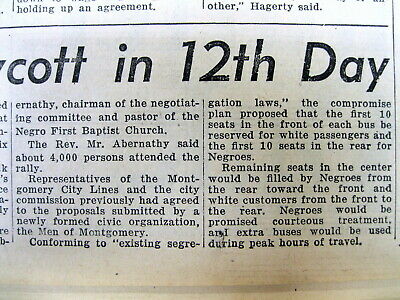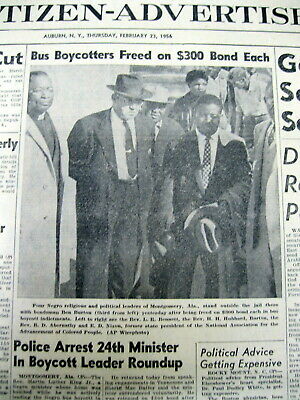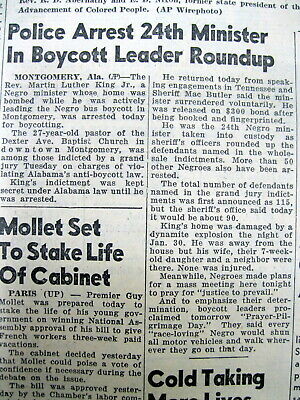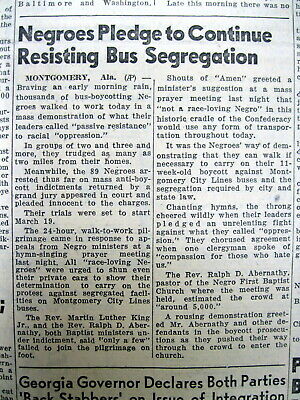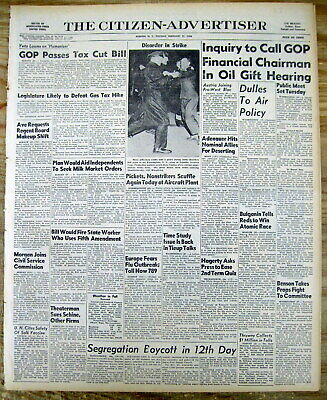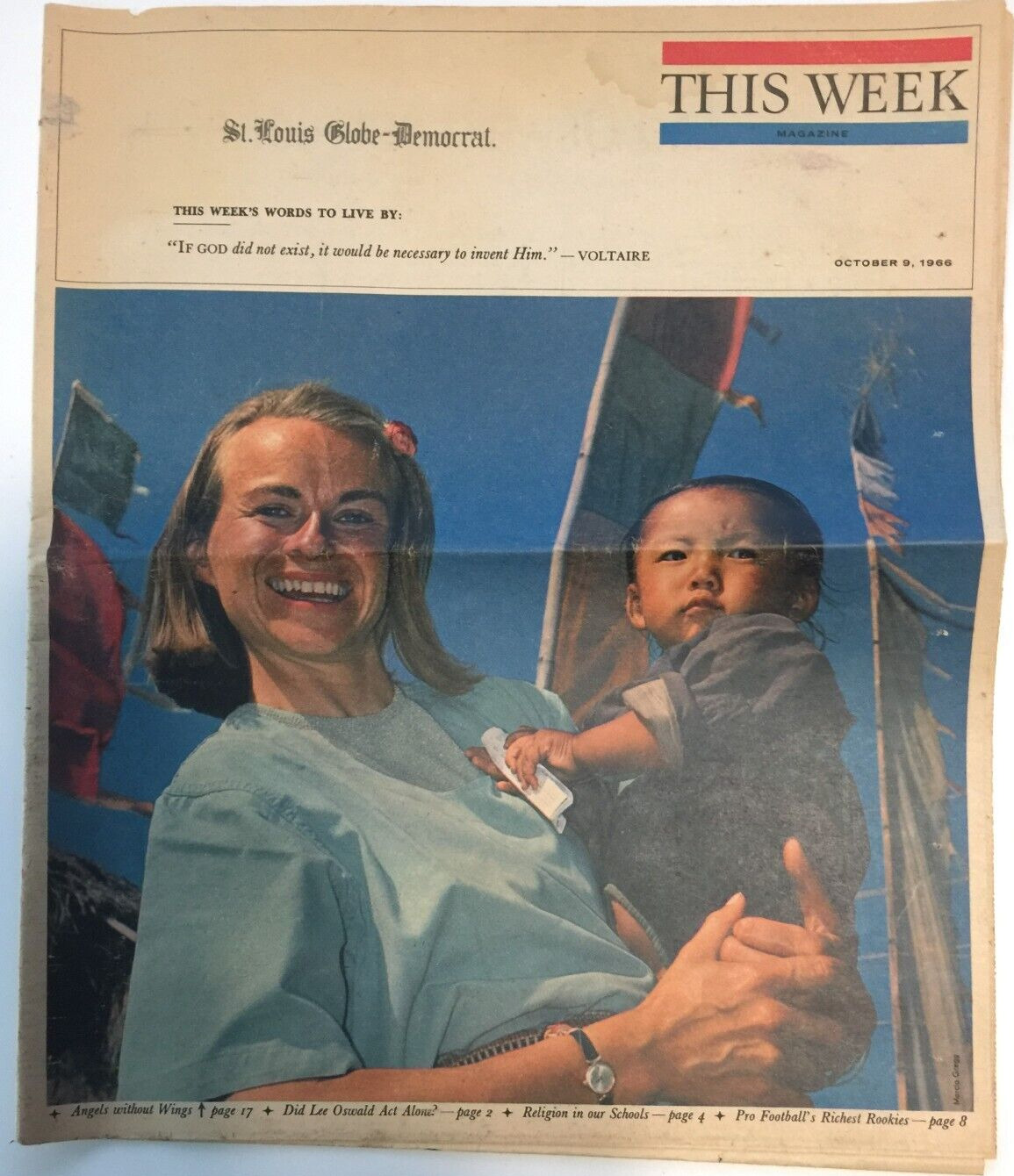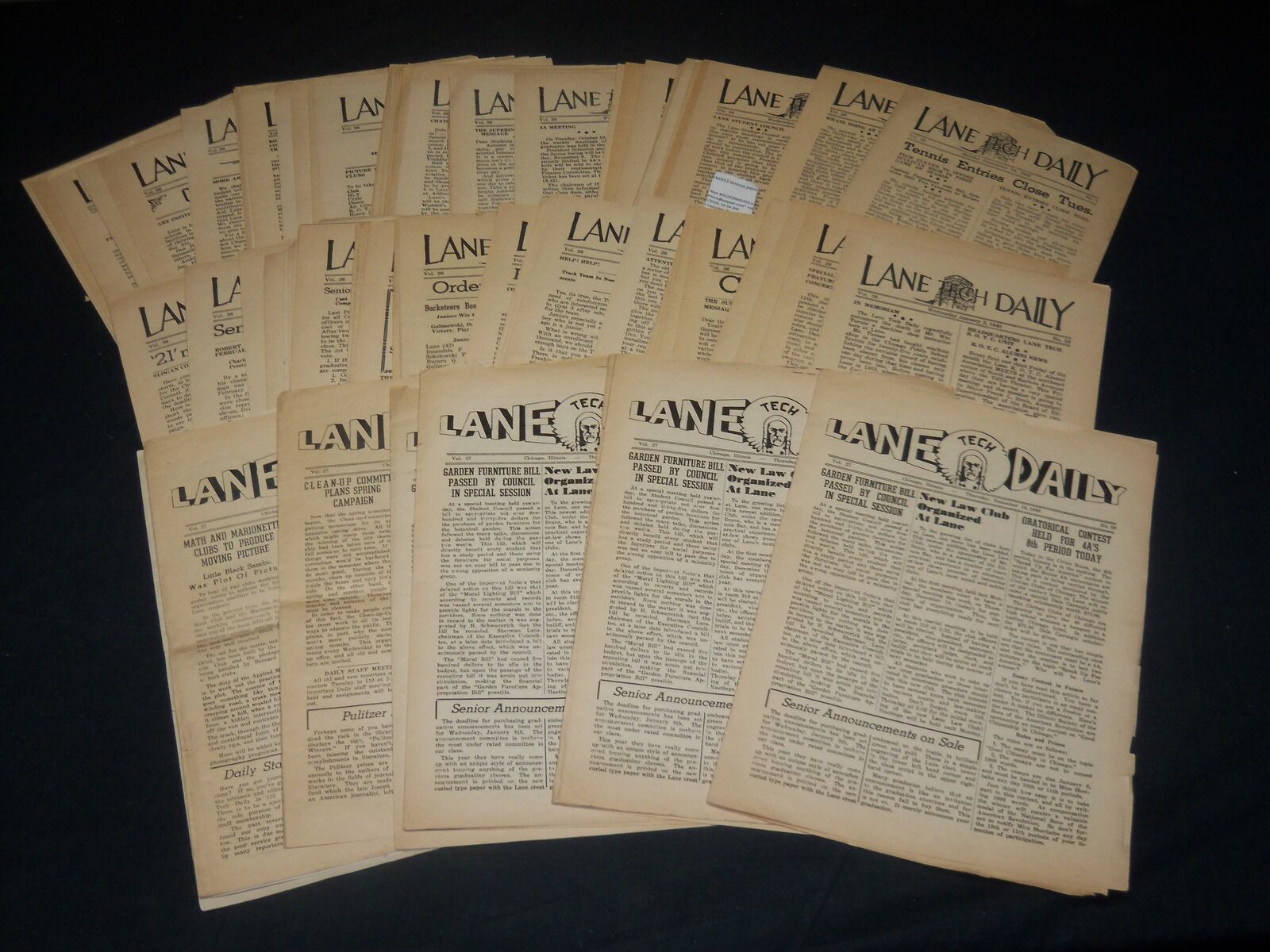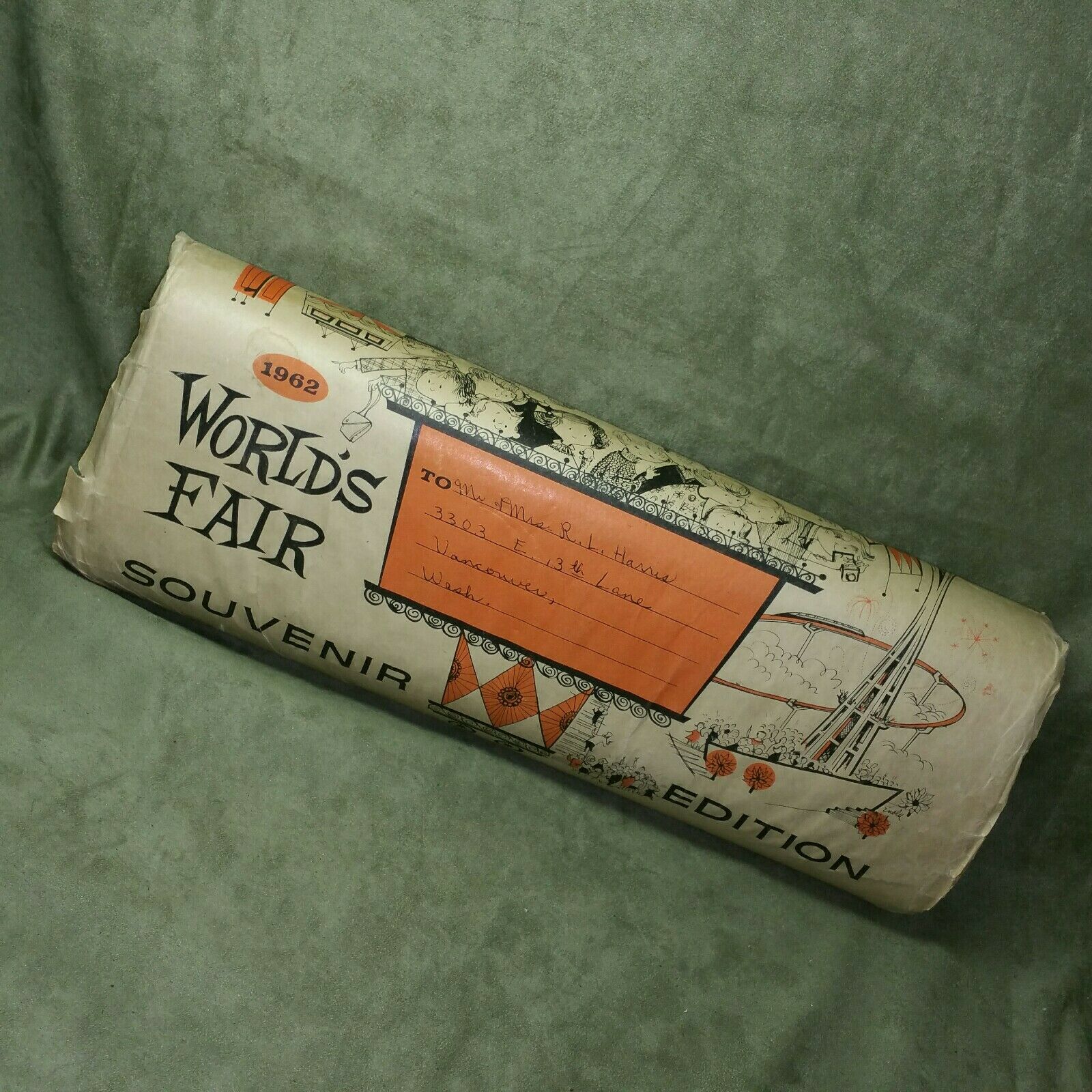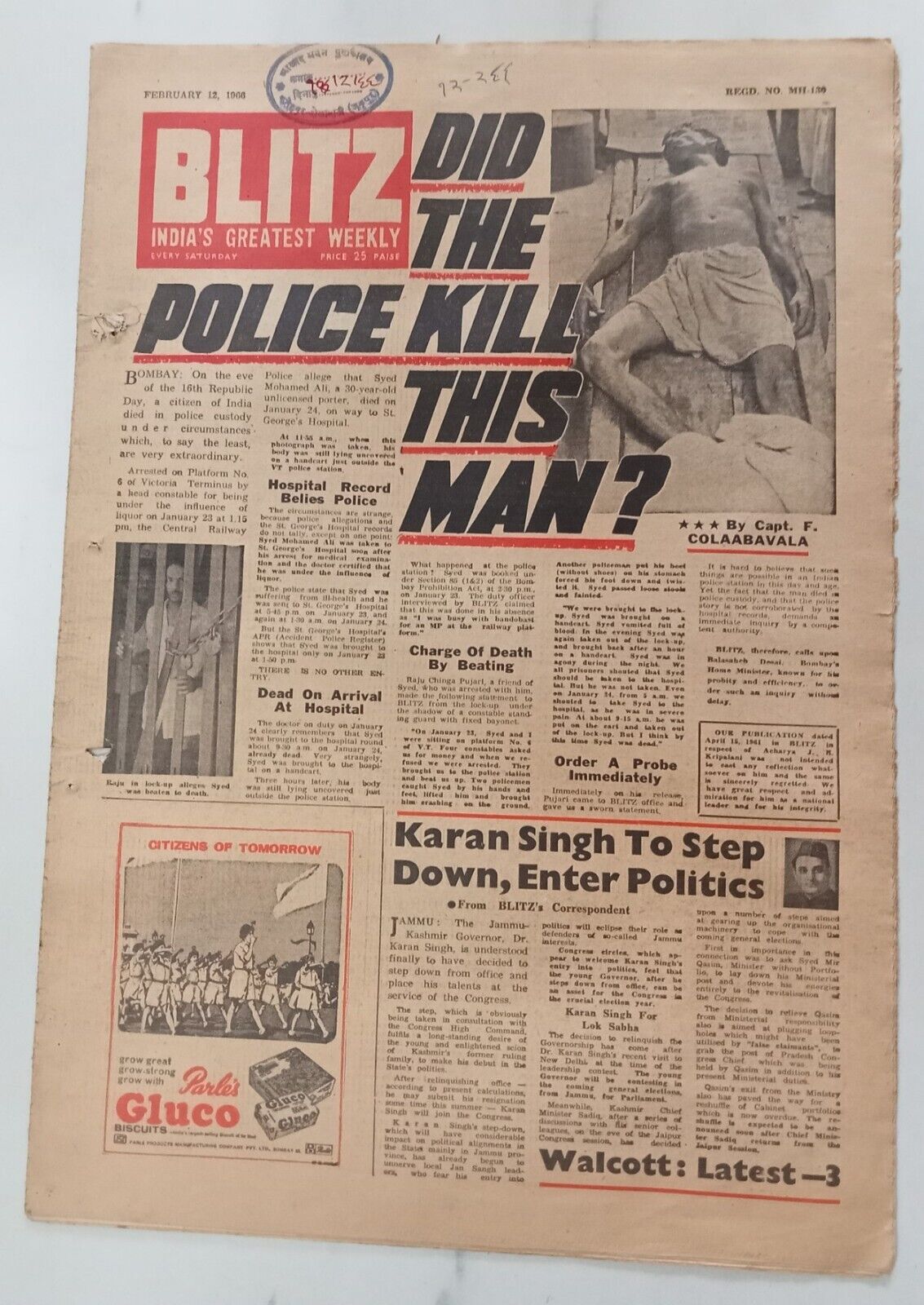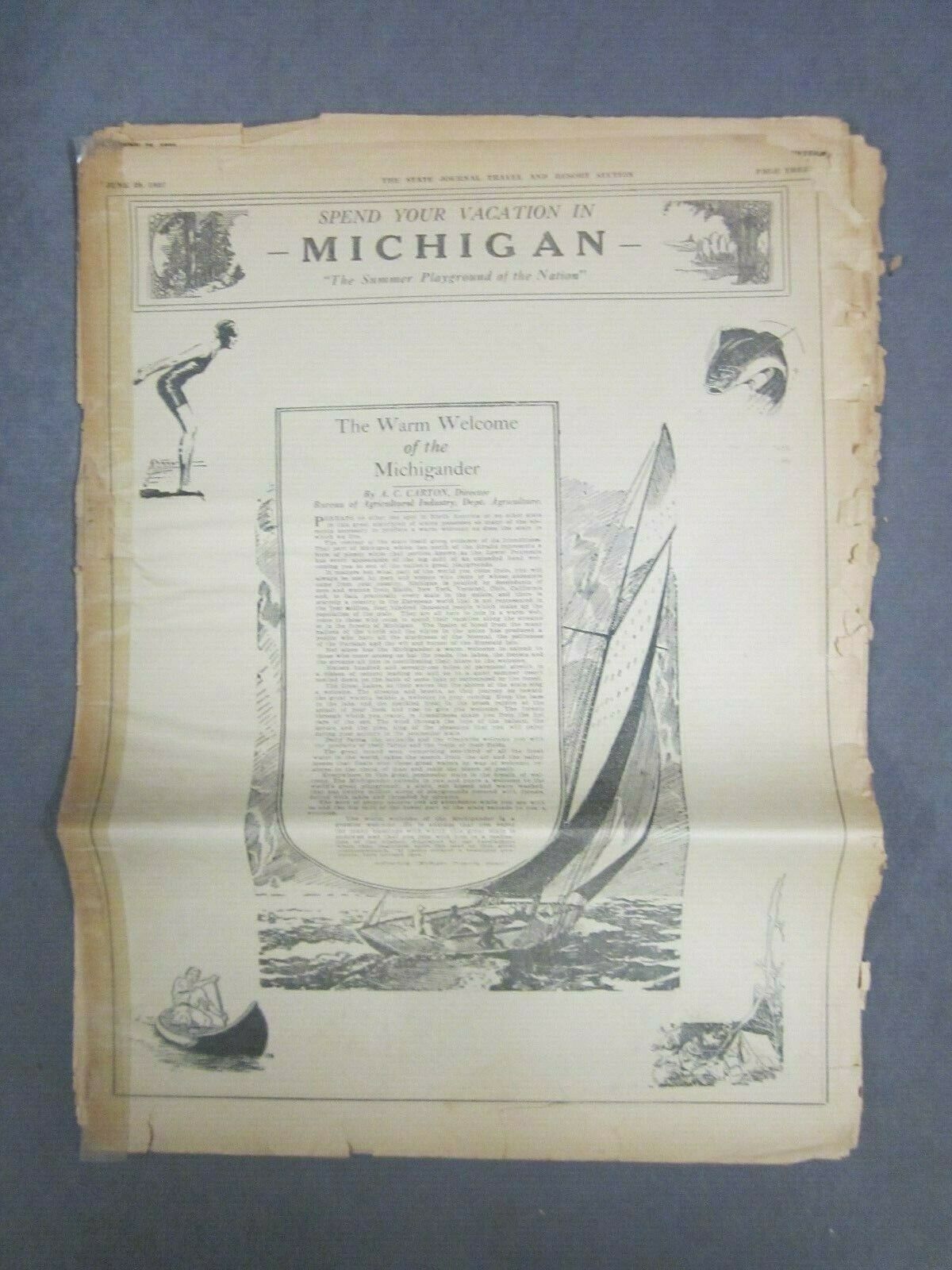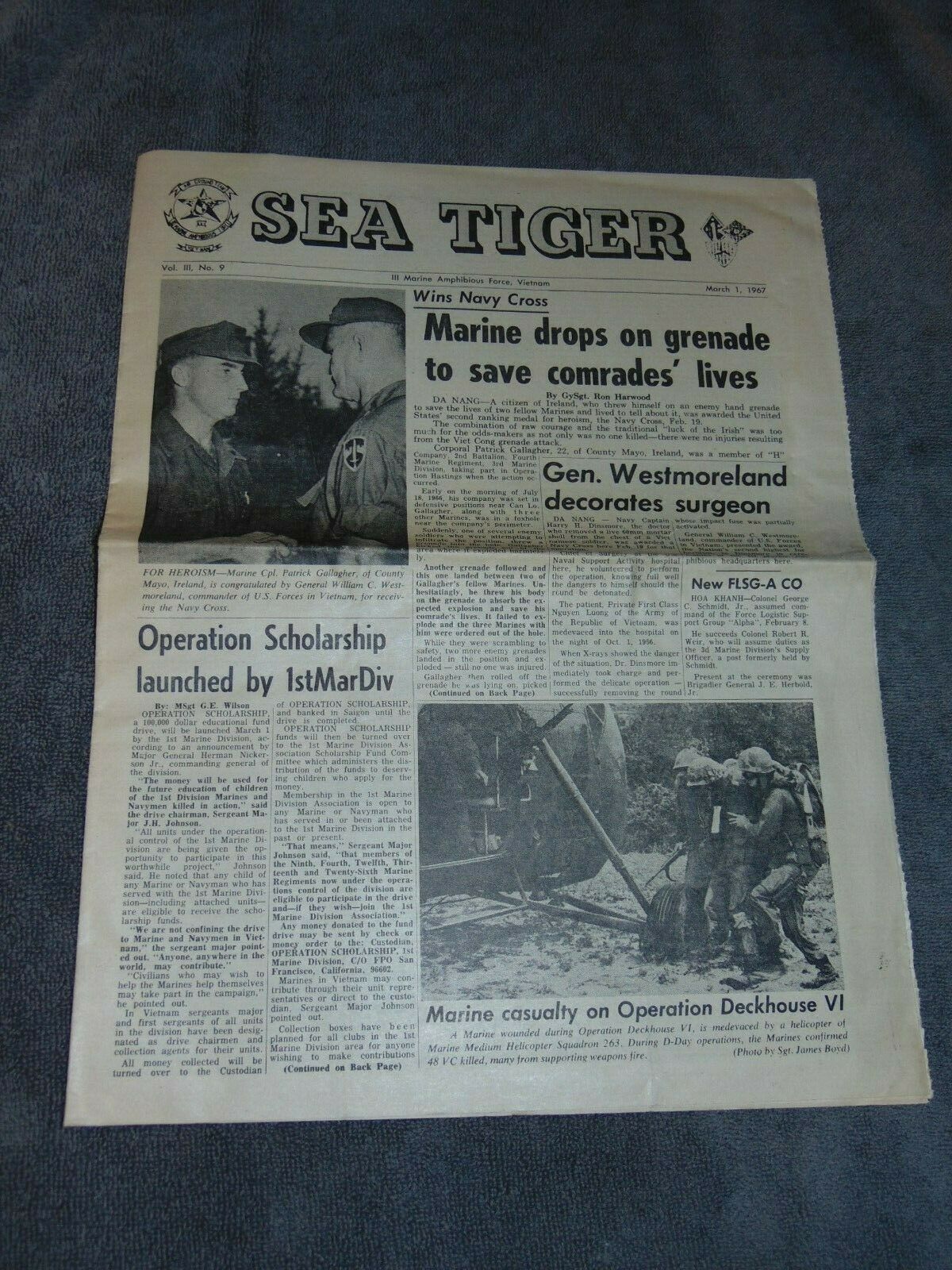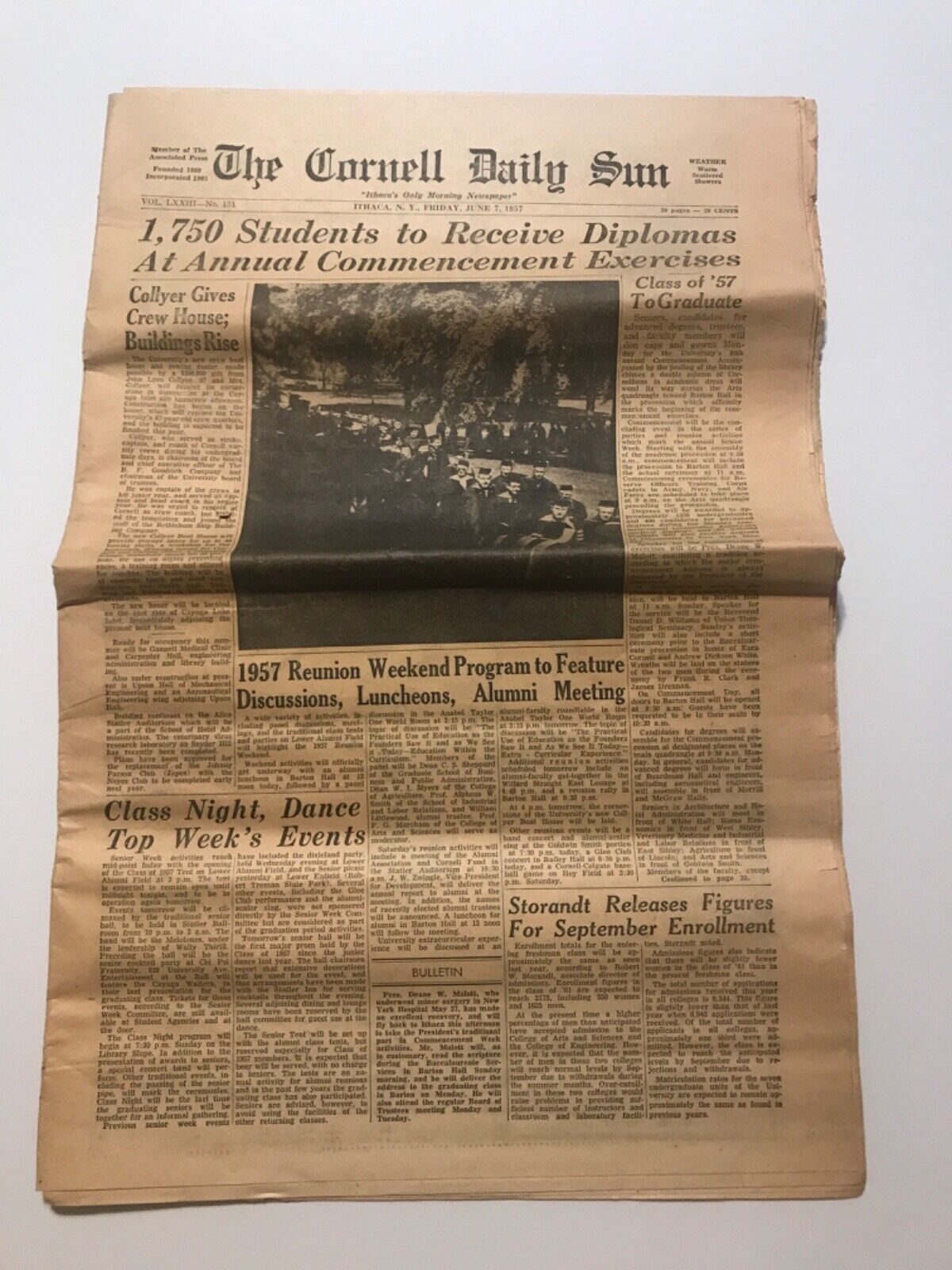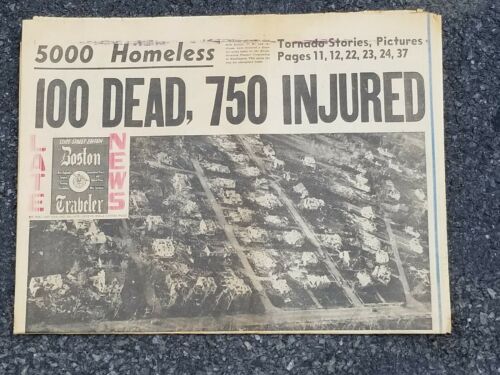-40%
5 1956 newspapers MONTGOMERY BUS BOYCOTT by BLACKS is LED by MARTIN LUTHER KING
$ 34.32
- Description
- Size Guide
Description
5 1956 newspapers - the MONTGOMERY BUS BOYCOTT by African-Americansis LED by DR MARTIN LUTHER KING, JR . This was
started by ROSA PARKS's defiance of WHITE SUPREMACY by refusing to give up her seat on a Montgomery bus to a White passenger -
inv # 2X-204
Please visit our EBAY STORE for THOUSANDS of HISTORICAL NEWSPAPERS on sale or at auction.
SEE PHOTO----- Five (5) COMPLETE, ORIGINAL NEWSPAPERs, the
Auburn Citizen-Advertiser
(NY) dated Feb 21, 22, 23, 24, and 25, 1956.
These 5 newspapers contain front page coverage of the
MONTGOMERY BUS BOYCOTT, led by Dr Martin Luther King, Jr
in the aftermath of Civil Rights hero ROSA PARKS refusing to move to the back of the bus and give up her seat on a Montgomery, Alabama bus to a White person.
The Montgomery Bus Boycott marks the BEGINNING of the modern day Civil Rights fight led by Dr Martin Luther King, Jr.
The Montgomery bus boycott was a political and social protest campaign against the policy of racial segregation on the public transit system of Montgomery, Alabama. It was a seminal event in the civil rights movement. The campaign lasted from December 5, 1955
— the Monday after Rosa Parks, an African-American woman, was arrested for refusing to surrender her seat to a white person — to December 20, 1956, when the federal ruling Browder v. Gayle took effect, and led to a United States Supreme Court decision that declared the Alabama and Montgomery laws that segregated buses were unconstitutional.[1] Many important figures in the civil rights movement took part in the boycott, including Reverend Martin Luther King Jr. and Ralph Abernathy.
The Montgomery Bus Boycott was a civil-rights protest during which African Americans refused to ride city buses in Montgomery, Alabama, to protest segregated seating. The boycott took place from December 5, 1955, to December 20, 1956, and is regarded as the first large-scale U.S. demonstration against segregation. Four days before the boycott began, Rosa Parks, an African-American woman, was arrested and fined for refusing to yield her bus seat to a white man. The U.S. Supreme Court ultimately ordered Montgomery to integrate its bus system, and one of the leaders of the boycott, a young pastor named Martin Luther King, Jr., emerged as a prominent leader of the American civil rights movement.
In 1955, African Americans were still required by a Montgomery, Alabama, city ordinance to sit in the back half of city buses and to yield their seats to white riders if the front half of the bus, reserved for whites, was full.
But on December 1, 1955, African-American seamstress Rosa Parks was commuting home on Montgomery’s Cleveland Avenue bus from her job at a local department store. She was seated in the front row of the "colored section." When the white seats filled, the driver, J. Fred Blake, asked Parks and three others to vacate their seats. The other African-American riders complied, but Parks refused.
She was arrested and fined , plus in court fees. This was not Parks’ first encounter with Blake. In 1943, she had paid her fare at the front of a bus he was driving, then exited so she could re-enter through the back door, as required. Blake pulled away before she could re-board the bus.
Upon her arrest, Parks called E.D. Nixon, a prominent black leader, who bailed her out of jail and determined she would be an upstanding and sympathetic plaintiff in a legal challenge of the segregation ordinance. African-American leaders decided to attack the ordinance using other tactics as well.
The Women’s Political Council (WPC), a group of black women working for civil rights, began circulating flyers calling for a boycott of the bus system on December 5, the day Parks would be tried in municipal court.
Approximately 40,000 African-American bus riders—the majority of the city’s bus riders—boycotted the system the next day, December 5. That afternoon, black leaders met to form the Montgomery Improvement Association (MIA). The group elected Martin Luther King, Jr., the 26-year-old-pastor of Montgomery’s Dexter Avenue Baptist Church, as its president, and decided to continue the boycott until the city met its demands.
Initially, the demands did not include changing the segregation laws; rather, the group demanded courtesy, the hiring of black drivers, and a first-come, first-seated policy, with whites entering and filling seats from the front and African Americans from the rear.
Ultimately, however, a group of five Montgomery women, represented by attorney Fred D. Gray and the NAACP, sued the city in U.S. District Court, seeking to have the busing segregation laws totally invalidated.
Although African Americans represented at least 75 percent of Montgomery’s bus ridership, the city resisted complying with the protester’s demands. To ensure the boycott could be sustained, black leaders organized carpools, and the city’s African-American taxi drivers charged only 10 cents—the same price as bus fare—for African-American riders.
Many black residents chose simply to walk to work or other destinations. Black leaders organized regular mass meetings to keep African-American residents mobilized around the boycott.
On June 5, 1956, a Montgomery federal court ruled that any law requiring racially segregated seating on buses violated the 14th Amendment to the U.S. Constitution. That amendment, adopted in 1868 following the U.S. Civil War, guarantees all citizens—regardless of race—equal rights and equal protection under state and federal laws.
The city appealed to the U.S. Supreme Court, which upheld the lower court’s decision on December 20, 1956. Montgomery’s buses were integrated on December 21, 1956, and the boycott ended. It had lasted 381 days.
Very good condition. This listing includes the 5 complete entire original newspapers, NOT just a clipping or a page of them. STEPHEN A. GOLDMAN HISTORICAL NEWSPAPERS stands behind all of the items that we sell with a no questions asked, money back guarantee. Every item we sell is an original newspaper printed on the date indicated at the beginning of its description. U.S. buyers pay priority mail postage which includes waterproof plastic and a heavy cardboard flat to protect your purchase from damage in the mail. International postage is quoted when we are informed as to where the package is to be sent. We do combine postage (to reduce postage costs) for multiple purchases sent in the same package.
We list thousands of rare newspapers with dates from 1570 through 2004 on Ebay each week. This is truly SIX CENTURIES OF HISTORY that YOU CAN OWN!
Stephen A. Goldman Historical Newspapers has been in the business of buying and selling historical newspapers for over 45 years. Dr. Goldman is a consultant to the Freedom Forum Newseum and a member of the American Antiquarian Society. You can buy with confidence from us, knowing that we stand behind all of our historical items with a 100% money back guarantee. Let our 45+ years of experience work for YOU ! We have hundreds of thousands of historical newspapers (and their very early precursors) for sale.
